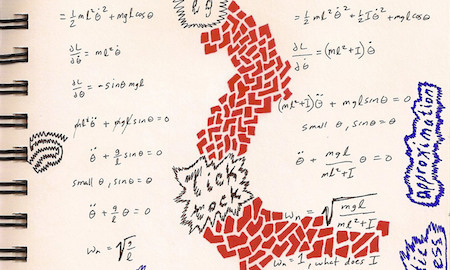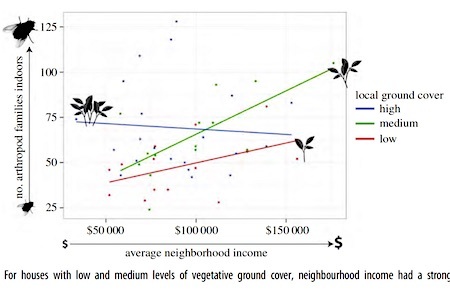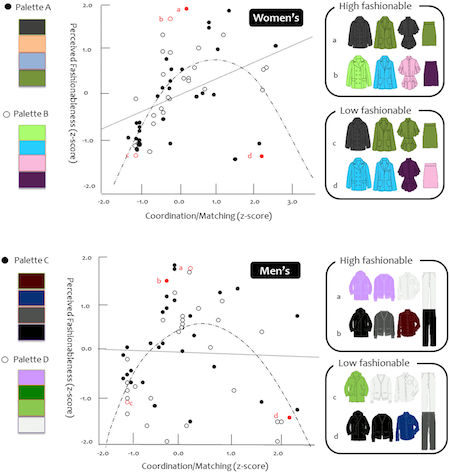Marc Abrahams's Blog, page 256
August 14, 2016
Girl Scout Cookies in the Larger Politico-Philosophic Context
Girl Scout cookies, familiar to most residents of the USA, represent more than tasty treats, suggests this Ph.D. thesis:
 “Smart Cookies: The Gendered Spaces of Labor, Citizenship, and Nationalism in the Girl Scout Cookie Sale,” Denise Marie Goerisch, Ph.D. dissertation in Geography, San Diego State University and University of California, Santa Barbara, September, 2013. The author explains:
“Smart Cookies: The Gendered Spaces of Labor, Citizenship, and Nationalism in the Girl Scout Cookie Sale,” Denise Marie Goerisch, Ph.D. dissertation in Geography, San Diego State University and University of California, Santa Barbara, September, 2013. The author explains:
“Each year thousands of Girl Scouts sell co okies to friends family, and neighbors to raise money for their troops and local councils…. Scouts learn to give and care for others under the veil of market capitalism, neoliberalism, and American nationalism, which seeks to reproduce hegemonic gender roles regarding labor, education, and citizenship. Based on a two-year study on the Girl Scout cookie sale, using qualitative methods and rooted in feminist methodologies, this project seeks to understand how ‘spaces of giving’ emerge in the cookie sale and how these spaces shape social constructions of gender, citizenship, and national identity.”
okies to friends family, and neighbors to raise money for their troops and local councils…. Scouts learn to give and care for others under the veil of market capitalism, neoliberalism, and American nationalism, which seeks to reproduce hegemonic gender roles regarding labor, education, and citizenship. Based on a two-year study on the Girl Scout cookie sale, using qualitative methods and rooted in feminist methodologies, this project seeks to understand how ‘spaces of giving’ emerge in the cookie sale and how these spaces shape social constructions of gender, citizenship, and national identity.”
(Thanks to Ron Josephson for bringing this to our attention.)

August 13, 2016
A Cloud Computing Based Big-Bang Big-Crunch Fuzzy Logic Multi Classifier System for Soccer Video Scenes Classification
The title says it all, more or less, in this new study:
 “A Cloud Computing Based Big-Bang Big-Crunch Fuzzy Logic Multi Classifier System for Soccer Video Scenes Classification,” Song Wei, Hani Hagras, and Daniyal Alghazzawi [pictured here], Memetic Computing, August 5, 2016. The authors, at the University of Essex, UK, and King Abdulaziz University, Saudi Arabia, somewhat explain:
“A Cloud Computing Based Big-Bang Big-Crunch Fuzzy Logic Multi Classifier System for Soccer Video Scenes Classification,” Song Wei, Hani Hagras, and Daniyal Alghazzawi [pictured here], Memetic Computing, August 5, 2016. The authors, at the University of Essex, UK, and King Abdulaziz University, Saudi Arabia, somewhat explain:
“in this paper we present a cloud computing based multi classifier systems which aggregates three classifiers based on neural networks and two fuzzy logic classifiers based on type-1 fuzzy logic and type-2 fuzzy logic classification systems which were optimized by a Big-Bang Big crunch optimization to maximize the system performance. We will present several real world experiments which shows the proposed classification system operating in real-time to produce high classification accuracies for soccer videos which outperforms the standalone classification systems based on neural networks, type-1 and type-2 fuzzy logic systems.”
(Thanks to Dan Eastwood for bringing this to our attention.)

August 12, 2016
Mathematics, Failure, and the World’s Most Famous Walking Event
Have you ever calculated your chances of being allowed to participate in an event? As at least one study demonstrates, you might be surprised.
The 100th International Four Days Marches Nijmegen, the world’s most famous walking event, took place last month. Over 40,000 people participated, and there are various ways that somebody can be allowed to participate in this march in a given year. As Antoine Amarilli, Marc Beunardeau, Rémi Géraud, and David Naccache demonstrated mathematically using probability theory (see their recent preprint) when pondering the rules in 2013, until a recent rules change, the best chance of being allowed to participate in the 100th event would occur if one failed that year’s event. See the transition graph below from Fig. 1 of their paper.


August 11, 2016
MUMPSIMUS in our midst, in profusion
Wikipedia provides a good definition: “A mumpsimus is an action by a person who adheres to a routine, idea, custom, set of beliefs, or a certain use of language that has been shown to be unreasonable or incorrect. For example, a person may continue to say all intents and purposes as all intensive purposes, even after being corrected. The term mumpsimus may also refer to the person who performs the action.”

Someone figured out how to make money from those physics crank letters
At last, someone figured out how to make money from the physics crank letters she receives!
That someone is Sabine Hossenfelder. She tells about how she does it, in an article in Aeon called “What I learned as a hired consultant to autodidact physicists“.
BONUS (possibly related): “A Fundamentally Eccentric Premise“, by L.X. Finegold.
BONUS (possibly related, but in a different way): Sanjay Srivastava‘s “Everything is fucked: The syllabus”

A sarcastic tweet detection algorithm
Is it possible to build a sarcasm detector classification algorithm for Twitter tweets? This was the question facing Christine Liebrecht, Florian Kunneman and Antal van den Bosch at the Centre for Language Studies, Radboud University, Nijmegen, The Netherlands, in 2013. And the answer, in broad terms, was found to be ‘yes’ – in fact the team went as far as to say that their algorithmic solution was ‘perfect’ (#not).
“In this study we developed and tested a system that detects sarcastic tweets in a realistic sample of 3.3 million Dutch tweets posted on a single day, trained on a set of nearly 78 thousand tweets, harvested over time, marked by the hashmark #sarcasme by the senders. The classifier is able to correctly detect 101 of the 135 tweets among the 3.3 million that were explicitly marked with the hashtag, with the hashtag removed.”
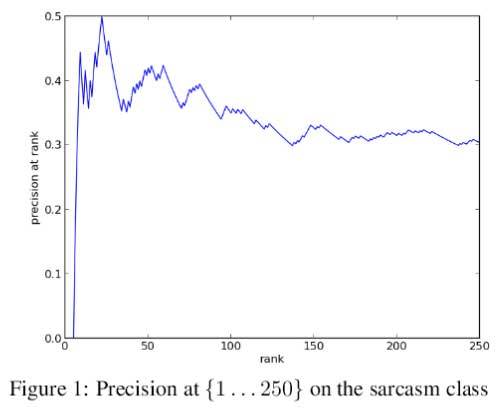 see: ‘The perfect solution for detecting sarcasm in tweets #not’ in: Proceedings of the 4th Workshop on Computational Approaches to Subjectivity, Sentiment and Social Media Analysis, pages 29–37, Atlanta, Georgia, 14 June 2013.
see: ‘The perfect solution for detecting sarcasm in tweets #not’ in: Proceedings of the 4th Workshop on Computational Approaches to Subjectivity, Sentiment and Social Media Analysis, pages 29–37, Atlanta, Georgia, 14 June 2013.
Update on sarcastic tweet detection.:
Silvio Amir, Byron C. Wallace, Hao Lyu, Paula Carvalho and Ḿario J. Silva of the INESC-ID Lisboa, Instituto Superior T́ecnico, Universidade de Lisboa, will present their paper ‘Modelling Context with User Embeddings for Sarcasm Detection in Social Media’ today at the SIGNLL Conference on Computational Natural Language Learning, in Berlin, (session 4, Sarcasm / Sentiment).
Also see: Automatic Sarcasm Recognizer – “yeah right”

August 10, 2016
The Wealthy Invite Richer Biodiversity in Bedroom and Basement
If you’re rich, you probably get to have lots more kinds of things living in your bedroom and basement, suggests this new study. The study is:
 “Exoskeletons and economics: indoor arthropod diversity increases in affluent neighbourhoods,” Misha Leong [pictured here], Matthew A. Bertone, Keith M. Bayless, Robert R. Dunn, Michelle D. Trautwein, Biology Letters, August 2016, Volume 12, issue 8. The authors, at the California Academy of Sciences, North Carolina State University, and the University of Copenhagen, Copenhagen, explain:
“Exoskeletons and economics: indoor arthropod diversity increases in affluent neighbourhoods,” Misha Leong [pictured here], Matthew A. Bertone, Keith M. Bayless, Robert R. Dunn, Michelle D. Trautwein, Biology Letters, August 2016, Volume 12, issue 8. The authors, at the California Academy of Sciences, North Carolina State University, and the University of Copenhagen, Copenhagen, explain:
“In urban ecosystems, socioeconomics contribute to patterns of biodiversity. The ‘luxury effect’, in which wealthier neighbourhoods are more biologically diverse, has been observed for plants, birds, bats and lizards. Here, we used data from a survey of indoor arthropod diversity (defined throughout as family-level richness) from 50 urban houses and found that house size, surrounding vegetation, as well as mean neighbourhood income best predict the number of kinds of arthropods found indoors. Our finding, that homes in wealthier neighbourhoods host higher indoor arthropod diversity (consisting of primarily non-pest species), shows that the luxury effect can extend to the indoor environment…. Our work suggests that the management of neighbourhoods and cities can have effects on biodiversity that can extend from trees and birds all the way to the arthropod life in bedrooms and basements.”
(Thanks to Ig Nobel Prize winner Hynek Burda for bringing this to our attention.)

Fifty Shades, by Gray [podcast 76]
A researcher named Gray and his research about combinations of clothing — that’s the possibly vexing heart of this week’s Improbable Research podcast.
SUBSCRIBE on Play.it, iTunes, or Spotify to get a new episode every week, free.
This week, Marc Abrahams — with dramatic readings by Harvard physicist Melissa Franklin — tells about:
Fifty shades, by Gray— “The Science of Style: In Fashion, Colors Should Match Only Moderately,” Kurt Gray [pictured here], Peter Schmitt, Nina Strohminger, Karim S. Kassam, PLoS ONE, vol. 9, no. 7, 2014, e102772.
The mysterious John Schedler or the shadowy Bruce Petschek perhaps did the sound engineering this week.
The Improbable Research podcast is all about research that makes people LAUGH, then THINK — real research, about anything and everything, from everywhere —research that may be good or bad, important or trivial, valuable or worthless. CBS distributes it, on the CBS Play.it web site, and on iTunes and Spotify).
Here’s further detail from the study:

August 9, 2016
Boys Will Be Boys: Eat or Be Eaten, and a Pestle
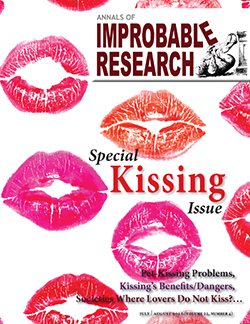 What’s the deal with people who yearn to eat or to be eaten — to literally consume, or to literally be consumed — during sex. And what’s a good example of an early medical report about a pestle found in a rectum?
What’s the deal with people who yearn to eat or to be eaten — to literally consume, or to literally be consumed — during sex. And what’s a good example of an early medical report about a pestle found in a rectum?
Those questions are addressed in studies that are profiled (in the column “Boys Will Be Boys: Eat or Be Eaten, and a Pestle“) in the special kissing issue of the Annals of Improbable Research.
The vorarephilia study, about the eating and/or being eaten, was done by researchers at the University of New England and the University of Toronto.

Shit and the Need for Data-Driven Standards
Feces, faeces, ordure, dung, manure, excreta, stool, stool-NOT-faeces, and stool-NOT-feces are the prime examples in a newly published study that examines the need for data-driven standards. The study is:
“Laying a Community-Based Foundation for Data-Driven Semantic Standards in Environmental Health Sciences,” Carolyn J. Mattingly, Rebecca Boyles, Cindy P. Lawler, Astrid C. Haugen, Allen Dearry, and Melissa Haendel, Environmental Health Perspectives, vol. 124, no. 8, August 2016, pp. 1136-1140. The authors, at North Carolina State University, the National Institutes of Health, and Oregon Health & Science University, present the essence of their argument in Table 1, which is reproduced here:
“Table 1. Variable results from a PubMed query of microbiome samples illustrates the consequences of lacking semantic standards and implementation.”
(Thanks to Tony Tweedale for bringing this to our attention.)
BONUS: Ed Yong has a new book about the microbiome. It’s called I Contain Multitudes: The Microbes Inside Us and a Grander View of Life.

Marc Abrahams's Blog
- Marc Abrahams's profile
- 14 followers



